Severus, the “Monophysite” patriarch of Antioch, was one of most gifted theologians of his time.[1] He came to the Episcopal See of Antioch in 512, under the rule of the anti-Chalcedonian emperor Anastasius, and was in charge of the bishopric until 518, when Justin I became emperor. After Justin’s rise to power, Severus was deposed and he fled Antioch taking refuge in Alexandria.
In Egypt, Severus featured prominently in ecclesiastical circles.[2] His writings, especially the cathedral homilies,[3] and also some of his letters,[4] were translated at an early date from Greek into Coptic. Moreover, the Copts composed various homilies under Severus’ name, which show their admiration for this champion of the anti-Chalcedonian resistance.[5] Hereby, I would like to draw attention to a couple of Coptic fragments from his 77th cathedral homily, which I found some time ago in the papyrus collection of the National Library in Vienna. This is part of my research on the Coptic version of this 77th homily by Severus of Antioch, which I hope to publish soon.
*
After the anathematization of Severus at the Council of Constantinople in 536, his works suffered a damnatio memoriae. They ceased to be copied and, consequently, they have not survived in Greek except for some fragments inserted in the Patristic exegetical catenae. However, the fate of the 77th cathedral homily was different. This text is a brilliant piece of exegesis, in which Severus tries to harmonize the apparently discordant accounts of the four Gospels concerning the events surrounding the resurrection of Christ. Due to Severus’ originality and mastering of the Scriptures, his homily on the harmony of the Gospels continued to attract interest and was transmitted through the Greek manuscript tradition even after the condemnation of its author in 536.
But how was it possible for a literary piece written by an anti-Chalcedonian theologian to be disseminated within a Chalcedonian environment? The answer is easy: by attributing the discourse to a spiritual authority recognized by the Byzantine churches. Severus’ homily has survived thanks to a secondary attribution to Gregory of Nyssa and Hesychius of Jerusalem. Under these prestigious guises, his exegetical work continued to be copied in Greek until late in the 17th century.
The complete Greek text of the 77th cathedral homily by Severus of Antioch was published by Marc-Antoine Kugener and Edgar Triffaux, together with two ancient Syriac versions, made by Paul of Callinicos and James of Edessa.[6] In Coptic, the homily in question survived only fragmentarily in two White Monastery parchment codices whose remnants are scattered today across the world. Although my edition of the Coptic text takes into account both of the manuscripts, here I will draw attention only to one of them, from which I found two new fragments in the National Library in Vienna.
Enzo Lucchesi was the first who identified two pieces from this codex, both in the National Library in Paris: BnF Copte 1316, f. 79 and BnF Copte 1323, f. 142.[7] Alla Elanskaya published, without a proper identification, another leaf containing the same work, which is part of the Golenischev collection in the Pushkin Museum in Moscow.[8] The text was only later recognized as being from Severus’ 77th cathedral homily by Sever Voicu.[9] To these testimonies, we can add two related folios from Vienna, which I found during a research visit to the Papyrussammlung in July 2009. The two leaves are paginated consecutively from 95 to 98. In the images below, we can see the Moscow fragment published by Elanskaya and one of the Vienna testimonies. The paleographical comparison clearly indicates that the dismembered fragments come from one and the same manuscript.

 Here is a summary of the fragments known so far, with the corresponding Greek text:
Here is a summary of the fragments known so far, with the corresponding Greek text:
Moscow, Pushkin Museum I.1.b.717 (pp. 65-66) = Patrologia Orientalis 16, 796-800
Paris, BnF 1316, f. 79v-r (pp. ?-?) = Patrologia Orientalis 16, 822-824
Paris, BnF 1323, f. 142 (pp. [93]-[94] = Patrologia Orientalis 16, 838-840
Vienna, K 9917bis (pp. 95-96) = Patrologia Orientalis 16, 840-842
Vienna, K 9748 (pp. 97-98) = Patrologia Orientalis 16, 842-844
During my research, I have identified several White Monastery codices copied by the same hand as the fragments above. However, the only surviving colophon by this scribe, which appears in a manuscript of the Catholic Epistles,[10] is undated and does not reveal thus anything concerning the period when this scribe was active.[11] More later…
[1] For a recent overview on Severus’ personality and work, see P. Allen & C.T.R. Hayward, Severus of Antioch (London & New York: Routledge, 2004).
[2] W.E. Crum, “Sévère d’Antioche en Égypte,” Revue de l’Orient Chrétien 23 (1922-23) 92-104; É. Porcher, “Sévère d’Antioche dans la litterature copte,” Revue de l’Orient Chrétien 12 (1907) 119-124, but Porcher’s list is incomplete. Many letters and cathedral homilies of Severus were identified by Enzo Lucchesi in a series of articles.
[3] The cathedral homilies of Severus were published after the complete Syriac version in the following issues of Patrologia Orientalis: 4/1 (1908), 8/2 (1912), 12/1 (1919), 16/5 (1922), 20/2 (1929), 22/2 (1930), 23/1 (1932), 25/1 (1943), 24/4 (1943), 26/3 (1950), 28/2 (1959), 20/1 (1961), 35/3 (1970), 36/1 (1971), 36/3 (1971), 36/4 (1971), 37/1 (1975), 38/2 (1976).
[4] Published by E.W. Brooks after the Syriac version in Patrologia Orientalis 12/2 (1919) and 14/1 (1920).
[5] Such pseudonymous works are, for example, the two encomia on the archangels Michael (CPG 7043, clavis coptica 0346) and Raphael (clavis coptica 0347).
[6] M.-A Kugener & E. Triffaux, Les Homiliae Cathedrales de Sévère d’Antioche. Homélie LXXVII (Patrologia Orientalis, 16/5; Paris: Firmin Didot, 1922).
[7] E. Lucchesi, Répertoire des manuscrits coptes (sahidiques) publiés de la Bibliothèque Nationale de Paris (Geneva: Patrick Cramer, 1981) 81, 88.
[8] A.I. Elanskaya, The Literary Coptic Manuscripts in the A.S. Pushkin State Fine Arts Museum in Moscow (Supplements to Vigiliae Christianae, 18; Leiden: E.J. Brill, 1994) 372-377, plates 139-140.
[9] S. Voicu, “Un frammento copto dell’Omelia cattedrale 77 di Severo d’Antiochia,” Augustinianum 32 (1992) 386-386.
[10] This codex has the siglum sa 547 in K. Schüssler, Biblia Coptica. Die koptischen Bibeltexte vol. 3, 3 (Wiesbaden: Harrassowitz Verlag, 2004) 46-50. Cf. also Idem, Die katolischen Briefe in der koptischen (sahidischen) Version vol. 1 (CSCO, 528. Scriptores coptici, 46; Louvain: Peeters, 1991) xc; Idem, Epistularum Catholicarum versio Sahidica vol. 1 (Ph.D. dissertation, Münster, 1969) 43-44, 54; G. Horner, The Coptic Version of the New Testament in the Southern Dialect vol. 7: The Catholic Epistles and the Apocalypse (Oxford: Clarendon Press, 1924) 547-548 (= no. 15).
[11] A. van Lantschoot, Recueil des colophons des manuscrits chrétiens d’Égypte (Bibliothèque du Muséon, 1; Louvain: J.-B. Istas, 1929) 158-159 (= no. XCIV).









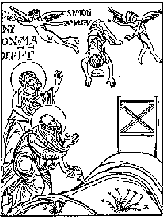




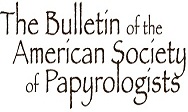
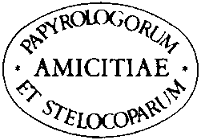
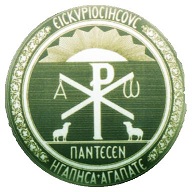





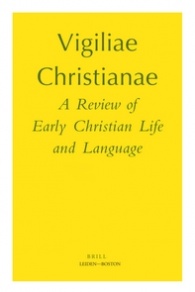






How large is the Coptic transmission of Severus’ work? I discovered Severus in January and am quite impressed with his defence of the conservative Cyrillian position following Chalcedon. I haven’t looked into his exegesis, so the 77th Cathedral Homily should be a good place to start! And I can even read Greek!!
We know over 25 works by Severus preserved in Coptic. My guess is that others are still unidentified. The 77th Cathedral Homily is an excellent piece of exegesis, you should definitely read it. Severus says there, among other things, that the resurrected Christ appeared first to his mother. The text was published in Patrologia Orientalis 16, which is available here: http://www.archive.org/details/patrologiaorient16pariuoft
I was unaware the PO was online! Huzzah! Saves me a long walk and descent into a dark basement full of heavy tomes.
Probably Severus’ Hom. 77 escaped the general condemnation of his writings because it had already entered the liturgical homiliaries in the same position it occupies now: Easer or around Easter. This might have happened already in the mid-6th century, when – under Justinian? – there is an important reshaping of the liturgical year and patristic readings become more popular. Certainly some people preferred to keep Hom. 77, not because there were in agreemen with Severus’ supposed christological tenets (never to be seen in the homily, as elsewhere in his writings), but simply changing the name was the simplest solution not to damage a precious liturgical book.